Pilates and Physical Therapy
There is an interesting and growing relationship between Pilates and physical therapy. As Pilates has become more popular over the last 20 years, more doctors are recommending Pilates to their clients with foot, knee, back, neck, shoulder pain, and other issues. Meanwhile, physical therapists are integrating Pilates equipment and exercises into their practices. While Pilates and physical therapy are not the same or interchangeable, there is an interesting relationship between the two. There are also distinctions that need to be made with regard to their approaches and limits in addressing health and disease.
The scope of practice for a Pilates professional specifically excludes claiming to diagnose, prescribe, treat, or rehabilitate any injury or disease, which is true for all non-licensed fitness professionals.
So what is the relationship between rehabilitation and physical therapy and what is the appropriate use of the term rehabilitation?
According to Dr. Brent Anderson, Founder and CEO of Polestar Pilates, licensed P.T., and orthopedic certified specialist with a PhD in physical therapy, rehabilitation is the medical arm of restoring function.
“You have to be a licensed professional to say you offer rehabilitation. Physical therapists, chiropractors, and speech therapists, for example, are licensed so they can offer rehabilitation. Since they are not licensed, Pilates, yoga, movement instructors in the United States cannot say they offer rehabilitation. To get even more specific, physical therapists are the licensed professionals who can offer rehabilitation through physical therapy and physical therapy is exclusive to them.”
What Pilates teachers can do is offer post-rehabilitation and wellness education. It is also quite relevant to look at the history of Pilates in terms of rehab. When Joseph Pilates was imprisoned on the Isle of Man for the duration of WWI, the rules regarding the scope of practice and what could or could not be called rehabilitation were not in place. Nevertheless, Joe took sick and injured people through his exercises with the clear intention of rehabilitating them. Later in New York City, he and his wife Clara developed much of their work as they worked with dancers, rehabilitating their injuries. Furthermore, Pilates equipment was designed to address rehabilitation - to take people through ranges of motion they couldn’t do against gravity on their own. Dr. Anderson gives an example:
“If you could not hold your arm up against gravity, you could suspend the limb. You could lay on your side with your arm connected to a spring or a chain, and you could move your arm forward and backward without the effect of gravity on it and start re-engaging muscle fibers. That's the Trapeze Table. And on the Reformer, if you couldn't stand or squat on your legs, you could set it to a lower spring and still have the closed chain effect of squatting and moving. So Joseph Pilates' work had an element of rehabilitation built into it.”
So while Pilates and physical therapy are not the same thing, they can also meet on a continuum of healing for the client. As Dr. Anderson explains:
“Restriction of any kind - psychological or physical - leads to compensation patterns. These compensations lead to misalignment or deformation. Then, people manifest pathologies that lead to pain.”
And here is where Dr. Anderson makes an important distinction between physical therapy and Pilates:
“Traditional medical professionals are going to address pathologies and pain. A Pilates teacher is not looking at pathology. A Pilates teacher is looking at overall alignment, articulation, mobility, control, balance, and fluidity.”
This is not to imply that one approach is more effective than the other. He affirms that the allopathic, localized approach of physical therapy - to identify a pathology and treat it from a localized point of view - will continue to be a crucial component to restoring the body to alignment. Our bodies sometimes need manual manipulation or surgery to repair structural issues.
In the video below, Aileen and Katie G. chat with River North PT Physical Therapists Caitlin and Stephanie about the intersection between Pilates and physical therapy. They echo Dr. Anderson’s views stating that the two practices don’t need to be seen as distinct, but rather as two ways to help rehabilitate and strengthen the body. Pilates and physical therapy can be seen as complementary in a strategy of healing that starts with overall movement patterns and compensations.
A holistic, comprehensive Pilates class is going to make a significant difference in a clients' quality of life.
